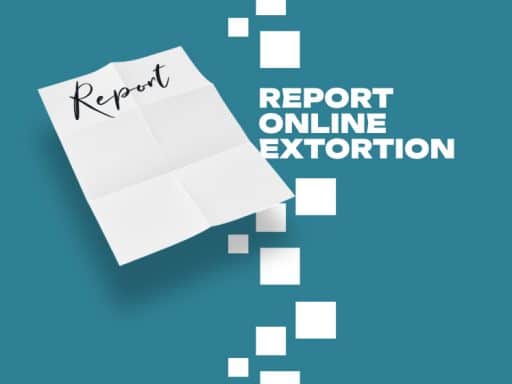Blackmail on Skype is a serious cybercrime that causes limitless financial and emotional calamity for the victims. This potential perturbation is compounded if the victim does not properly report the incident.
Correctly persevering and documenting evidence of the attack and collaborating with the correct agencies can make all the difference in recovering from one of these scams. Continue reading to learn how to properly go about reporting blackmail on Skype.
Understanding the Reporting Process
Before filing a Skype blackmail report, you need to understand why it’s important to document these instances, what information you need to collect, and what to expect while working through the report. It is important that cybercrimes like online blackmail are properly reported for the wellbeing of the entire internet.
Why Skype Blackmail Reporting Is Crucial
Reporting blackmail on Skype or any online platform is beneficial for a number of reasons. For starters, reporting to the system administrator can have malicious accounts removed, which helps protect you and others from potential cybercrime in the future.
Building upon this, collaborating with law enforcement and cybersecurity agencies can help you identify the blackmailer and document the timeline of the crime. This evidence will be of the upmost importance if you decide to take legal action against the perpetrator.
Will the Blackmailer Know You Reported Them?
If you report a Skype blackmailer, they will not be notified and the process is generally confidential. However, there are signs from the perpetrator’s perspective that may give it away. Inability to access your profile and messages and calls that won’t go through may let a bad actor know they’ve been blocked.
When proceeding with law enforcement, there are safeguards in place to keep the reporting party anonymous in instances where identifying them may jeopardize their safety. However, the accused also have rights to identify and confront their accuser, so the reporting party may be identified in legal proceedings.
Documenting Evidence
You will need proof of the cybercrime when reporting to the platform and legal agencies. You should collect screenshots of your blackmailer’s profile and the chat log. Make sure to include any media they’ve sent you, messages of a threatening nature, and transaction history if you’ve already sent money. It is important to note that you do not need to include any content that is being used to blackmail you, so any embarrassing images of videos can be redacted.
Make sure to preserve the integrity of the evidence you collect. Keep a log of who has accessed the evidence and when to maintain the chain of custody. Save backups of the evidence on a separate device to ensure you will have a safe copy. Working with digital forensics professionals can help you collect, preserve, and document the evidence to guarantee it’s admissible in court.
Reporting Skype Blackmail to Administrators
Any blackmail or other cybercrime on Skype should be reported to the system administrator. This is a crucial step as it could result in the blackmailer’s account being removed from the platform. This can help prevent them from harassing you further and protect other users from falling into the same trap.
Using Skype’s Reporting Tools
In the event of Skype blackmail, you can report both individual messages and entire profiles to the system administrator. The processes for reporting both are slightly different, so we will cover both below.
To report a message or image containing blackmail on Skype:
- Open the chat where the blackmail occurred
- Click on the item you want to report
- Select “report a concern”
- Select a reason and submit the report
To report a blackmailer’s account on Skype:
- Click the contact you wish to block and select “view profile”
- Scroll to the bottom and select “block contact”
- Toggle on “report abuse from this person”
- Select a reason and submit the report
Contacting Skype Support
Currently, the contact Skype support page displays a message detailing the upcoming transition to Microsoft Teams Free. When working through Microsoft Support, you can scroll through a list of recommended articles based on your search.
If you are not satisfied with the results, Microsoft will prompt you to post to their community support thread or redirect you to their Skype shutdown announcement. Putting another reason for your support request may put you through to a support number or online support agent.
If a support number is not found under the “contact us” tab, you can also find a list of customer service numbers through a web browser search. A list of customer service lines based on geographic location can be found here.
What Happens After Reporting Blackmail to Skype?
After Skype receives your blackmail report, they may be able to remove the account that has been harassing you. However, these cases can take time to review and be acted upon due to the number of reports filed on a regular basis.
Additionally, it is possible for the cybercriminal to simply create a new account. If they know your username, they can simply contact you through their new account. Due to these limitations, you should also work with law enforcement when dealing with blackmail on Skype.
Reporting Skype Blackmail to Law Enforcement
After making a blackmail report to Skype administrators, your next step should be working with law enforcement. You will want to begin by filing a police report with your local law enforcement. From there, you can determine what your next move will be in the legal process.
FBI’s Internet Crime Complaint Center (IC3)
After filing a police report, Skype blackmail should be reported to the FBI through their IC3 division. The IC3 is tasked with receiving all cyber-enabled crime reports in the United States. They promote reporting your case, even if you are unsure if it meets their cybercrime criteria.
You can report Skype blackmail to the IC3 using the online report form on their page. The reporting process is as follows:
- Visit the IC3 page and click “File a Complaint”
- Fill out contact information of you or the complainant
- If you lost money, report the total loss and method of transaction
- Provide as much information on the blackmailer as possible
- Provide all the information and evidence you have regarding the cybercrime(1)

Understanding Legal Implications
Online blackmail is illegal at both the federal and state level in the United States with protections that enable victims to seek criminal or civil charges depending on their location. You can read more about the laws regarding blackmail by state here.
Under federal law, blackmail can carry court-ordered fines and a prison sentence of up to one year. Some state-level laws have harsher protections against blackmail, with some carrying penalties of up to 10 years in prison based on the severity of the crime(2).
Working with Law Enforcement
Cooperating with law enforcement throughout the investigation can give you access to tools and resources that you wouldn’t have on your own. Legal agencies can obtain subpoenas or warrants to identify the blackmailer.
Securing Your Skype Account and Devices
After your Skype blackmail case has been reported and resolved, you should still take proactive measures to secure your digital presence. The following course of action can help you avoid further sketchy activity on Skype.
- Changing Your Password and Enabling 2FA: You should update your password if you believe your account may have been compromised. Additionally, you should enable 2FA and consider using a password manager that can create and store strong and unique passwords for you.
- Reviewing Privacy Settings: You can limit which users can view your profile and contact you by adjusting your privacy settings. Additionally, you should avoid oversharing personal information with anyone online.
- Scanning for Malware: Blackmailers on Skype may try to infiltrate your account or device with malware. If you’ve opened any links or attachments sent to you by suspicious Skype accounts, you should scan your devise with a reputable anti-malware software.
Seeking Support and Resources
There are additional resources available that can help you gather evidence, properly report the incident, recover from the attack, and prevent future online harassment. Working with organizations that provide cybersecurity expertise and can assist with emotional support can be extremely beneficial to victims of blackmail on Skype.
Cybercrime Support Network
The Cybercrime Support Network is a non-profit with the goal of assisting victims of cybercrimes. Blackmail on Skype and other scams can be reported through their website. Furthermore, the page allows you to access educational content and find support groups to connect with others who have a shared experience.
Work With Digital Forensics
Here at DFC, our team of experts know exactly what is needed to complete a proper Skype blackmail report. Our cutting-edge investigation techniques include metadata analysis and IP tracking that allow us to uncover the real identities of cybercriminals.
Furthermore, we can employ preservation strategies such as device imaging to ensure your evidence is safely collected. We understand how to properly document the event to ensure your report is usable in legal proceedings.
If you’re a victim of blackmail on Skype, there is hope for a successful recovery. Call our Blackmail Helpline to speak with one of our specialists and see how we can assist you.
Sources:
- Home Page – Internet Crime Complaint Center (IC3)
- Understanding Blackmail: Legal Definitions and Victim Protections – LegalClarity






